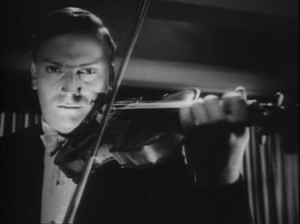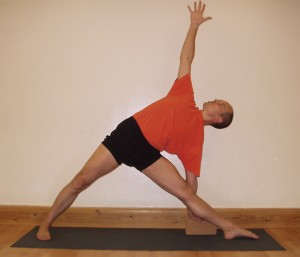(Quotation by B. K. S. Iyengar, 2002)
Approximately 20.4 million Americans, 8.7 percent of the adult population, practice yoga. I’m one of them. Without the work of B. K. S. Iyengar, it’s unlikely most practitioners would even know yoga exists, let alone be able to do the poses. He was the teacher who introduced the props found in most yoga studios – straps, bolsters, blocks and blankets. Everything flows from proper alignment, and if someone needs assistance to meet that goal, he or she should have it. Mr. Iyengar passed away last Wednesday, August 20.
The child once told he would not live past the age of 20, lived to be 95. The boy born into poverty became one of Time Magazine’s “100 Most Influential People.”
“Yoga is the golden key that unlocks the door to peace, tranquility and joy.”
Every life has turning points and milestones. Opportunities offered. Some accepted, some declined. Some pursued with determination, others with half-hearted enthusiasm. B. K. S. Iyengar recognized such moments and responded with integrity. Here are two stories.
When he was sixteen, B. K. S. Iyengar accepted an invitation from his brother-in-law. Tirumalai Krishnamacharya, the man often referred to as the Father of Modern Yoga, invited his teen-age relative to join the Maharaja of Mysore’s royal school at Jaganmohan Palace. B. K. S. Iyengar discovered yoga and used it to bring his physical body to optimum fitness.
“To my best violin teacher”
In 1952 renowned violinist Yehudi Menuhin was giving a series of concerts in India at the invitation of Prime Minister Jawaharal Nehru. As it happened, the previous year, while waiting to see his osteopath, Mr. Menuhin found a pamphlet about yoga. Mr. Menuhin, who suffered a variety of muscular and skeletal ailments, was intrigued.

When Mr. Menuhin met Prime Minister Nehru, he mentioned the book. The prime minister smiled and dared the violinist to stand on his head. Menuhin did so. Delighted, Nehru also went into the pose. The story made headlines throughout India. Many yoga teachers offered their services to Menuhin. At some point, Menuhin discussed the situation with the wife of cardiologist Rustam Vakil. She recommended the family guru, B. K. S. Iyengar.
Menuhin requested a meeting, but had a full schedule. He could only spare five minutes at 7:00 in the morning. Those five minutes stretched into three and a half hours. Menuhin became a lifelong student, invited B. K. S. Iyengar to join him in Switzerland and introduced him to students and prominent people, including then eighty-year-old Elisabeth, Queen Mother of Belgium who allegedly said, “If you can’t teach me to stand on my head, you can leave.” Of course, B. K. S. Iyengar met the challenge.
In 1954, Yehudi Menuhin presented B. K. S. Iyengar with a watch to commemorate their time together. On the watch’s back was an inscription: “To my best violin teacher.”
Mr. Iyengar’s reputation began to spread. In 1966, he published Light on Yoga with a forward by Yehudi Menuhin. The small book featuring 200 poses has been translated into seventeen languages and never gone out of print.
“How can you know God if you don’t know your big toe?”
B. K. S. Iyengar didn’t introduce yoga to the United States, but he made the practice practical and accessible. “The qualities demanded from an aspirant are discipline, faith, tenacity and perseverance to practise regularly and without interruptions.” [1] Anyone can do yoga, provided he or she is committed to the practice. As Patricia Walden recalled in 2000, “Iyengar was, like, ‘Stand on your feet. Feel your feet.’ He was so practical.”

The term Iyengar became so common, Oxford Dictionary compilers made Mr. Iyengar’s name a noun:
Iyengar
Syllabification: I·yen·gar
Pronunciation: /ēˈyeNGɡär
NOUN
A type of ashtanga yoga focusing on the correct alignment of the body, making use of straps, wooden blocks, etc. as aids to achieving the correct postures.
And then, in 2004, Time Magazine named B. K. S. Iyengar as one of the “100 Most Influential People” in the world.
B. K. S. Iyengar blessed us and changed many lives. His was a life well-lived.
Acknowledgements:
Featured Photo: B. K. S. Iyengar. Photo by Mutt Lunker, 2004. Creative Commons Attribution. Wikimedia Commons.
Statistic on American yoga practitioners from “American Yoga: How Many People Practice in the United States?” Huffington Post. Dec 7, 2012. here
Note [1]. B. K. S. Iyengar. Light on Yoga. 1966. p.57.
Iyengar Entry. Oxford Dictionaries
Patricia Walden quotation taken from Ellen Barry. “B.K.S. Iyengar, Who Helped Bring Yoga to the West, Dies at 95” New York Times, Aug. 20, 2014. Access here. More on Patricia Walden here.
Anon. “BKS Iyengar Obituary.” Mail & Guardian. Aug 21, 2014. here.
Kofi Busia. The maestro and the Queen. here.
Editor. “Yoga Loses Luminary BKS Iyengar” Aug 20, 2014. Yoga Journal. here
Ninmala George.“Obituary: B.K.S. Iyengar.” Aug 23, 2014. Washington Post. here
Harshith Mallya. “Six Life Lessons from B. K. S. Iyengar.” Aug. 21, 2014. Your Story. here
Michael Richards.“B.K.S. Iyengar.” April 26, 2004. Time Magazine. here.
Ayesha Venkataraman.“B.K.S. Iyengar: The gurugi who brought yoga to the masses.” Aug 23, 2014, Aljazeera America. here

Sandra Wagner-Wright holds the doctoral degree in history and taught women’s and global history at the University of Hawai`i. Sandra travels for her research, most recently to Salem, Massachusetts, the setting of her new Salem Stories series. She also enjoys traveling for new experiences. Recent trips include Antarctica and a river cruise on the Rhine from Amsterdam to Basel.
Sandra particularly likes writing about strong women who make a difference. She lives in Hilo, Hawai`i with her family and writes a blog relating to history, travel, and the idiosyncrasies of life.

